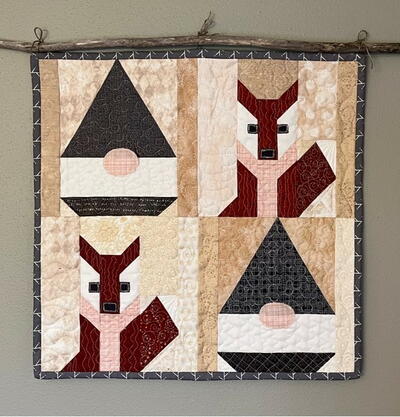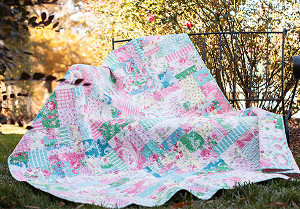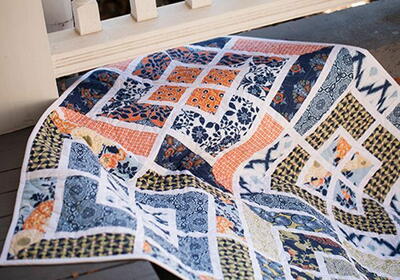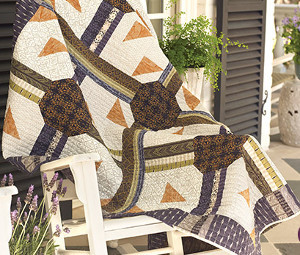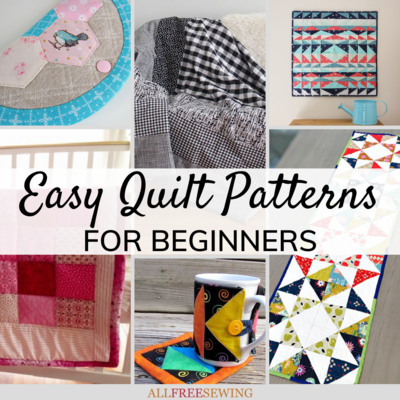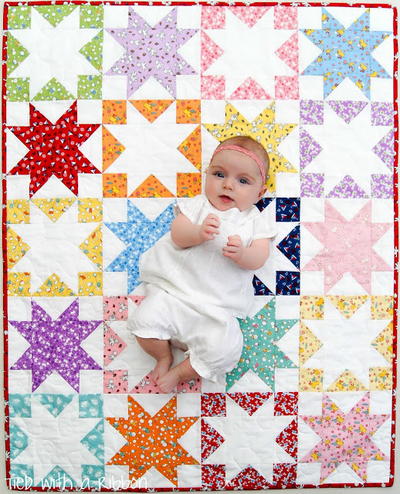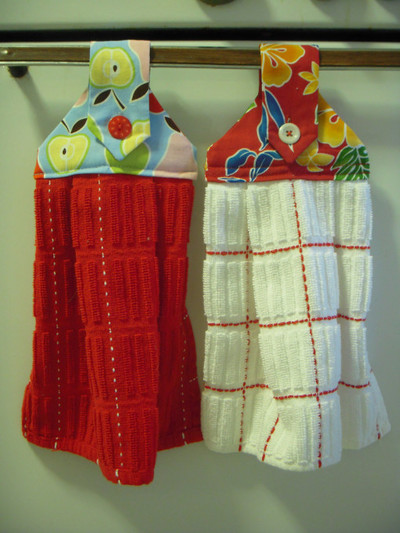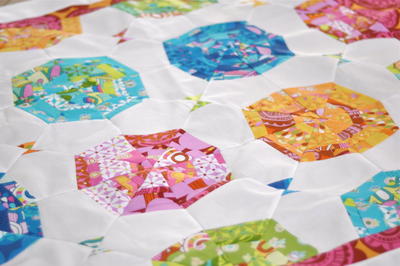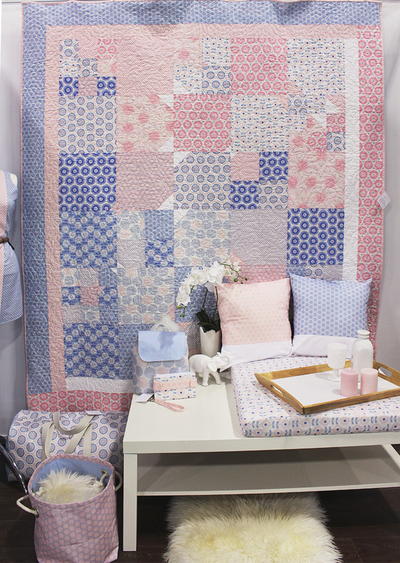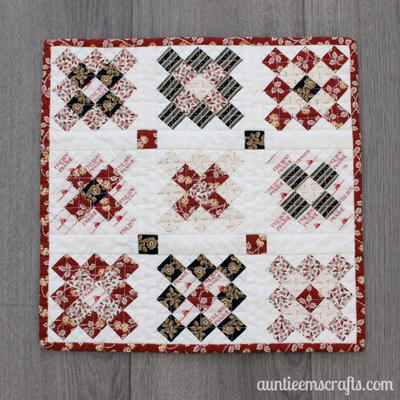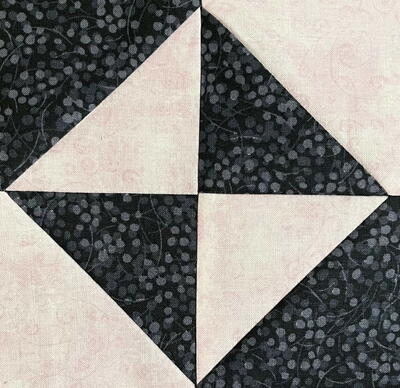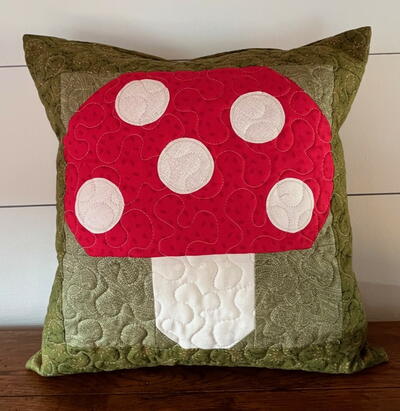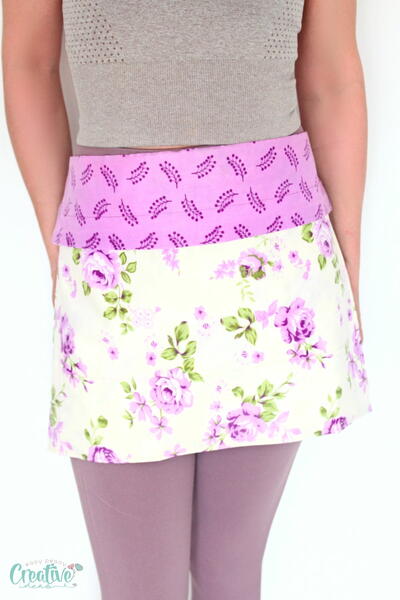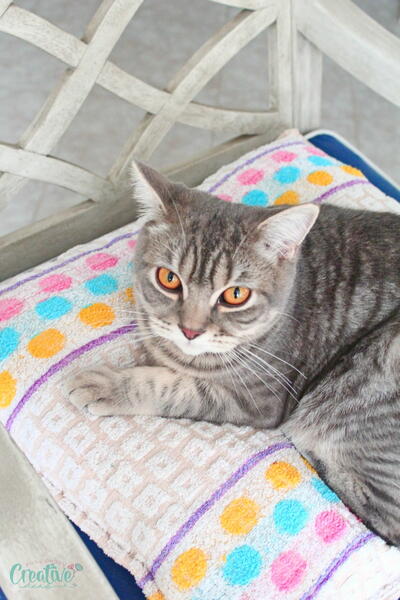Forest Fox and Gnome Quilt Pattern Free
This adorable DIY quilted wall hanging features trendy gnomes and autumnal foxes. This gnome quilt is ready to welcome your guests!
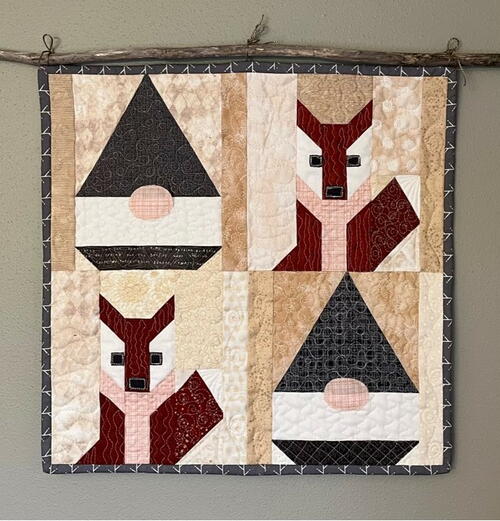
Gnomebody can resist this cute and folky Forest Fox Gnome Quilt Pattern (with free PDF). In the past few years, gnomes have become increasingly more popular.
Now gnomes are everywhere you look and we're here for it. Although gnome decor is in nearly every boutique, it's difficult to find a quality Scandinavian gnome pattern for free.
This particular quilt is presented as a wall hanging and is a unique and original design that you can replicate for your own home. The sweet gnomes on this DIY quilt aren't the only draw, though. Along with the two gnomes are two darling foxes.
The rustic charm of this fox and gnome quilt is one of the many reasons you should make at least one of these beauties for your home or to give as gifts to nature-loving family and friends.
Plus, scroll to the bottom to download the PDF of this gnome and fox quilt pattern for free. Want to make a quilted pillow of this pattern? Visit Lakegirlquilts for Bonnie's gnome pillow quilting pattern. Here's Bonnie to explain this pattern:
Join Sewing It Up For More Free Patterns, Tutorials, & Guides >>
General Sewing Directions for This Mini Quilt
• The directions for this pattern are for rotary cutting, machine piecing, machine quilting, and the binding is hand-stitched to the quilt back.
• Accurate cutting and sewing enhances your final product. Pin your pieces together before sewing them to ensure proper seam alignment.
• Use a 1/4" seam allowance. I recommend using a special presser foot with a 1/4" guide if you have one for your machine. This will help you get uniform seams, and matching corners.
• Follow the directions described below as you press open the seams to eliminate bulk and help seams to lay flat.
• The finished quilt measures 16" x 16".
Fox and Gnome Quilt Pattern Fabric Requirements
I used a variety of rust and gray colored prints for the Foxy Gnomes Quilt. I also used a dark cream print for all the backgrounds. But there are no rules! Use any color you love or a variety of your favorite colors.
• Rust: The total fabric needed is about 1/4 yard. However, to achieve the scrappy look of this quilt, I suggest using a few different prints. Either raid your stash or purchase a few new fat quarters.
• Gray: Again, the total fabric needed is about 1/4 yard. I recommend using a few different prints.
• White: 1/8 yard
• Peach: 1/8 yard
• Cream: 1/2 yard total, you can use a few different prints if you’d like more of a scrappy look.
• Dark Gray or Black (for eyes and fox nose): 2" x 2" piece
• Fabric for Backing: 5/8 yard
• Binding Fabric: 1/4 yard
• Batting: You'll need a piece of 20" x 20" thin cotton batting (like Warm & Natural).
• Fusible Web (like Wonder-Under): You’ll need a 5" x 5" piece.
Fox and Gnome Quilt Pattern Cutting Directions
• Rust: Cut 2 – 4-1/4" x 2-1/2" strips; 10 – 1-1/2" x 1-1/2" squares; and 6 – 3-1/2" x 1-1/2" strips.
• Gray: Cut 2 – 6-1/2" x 1-1/2" strips and 2 triangles from Template A (found here).
• White: Cut 2 – 6-1/2" x 2-1/2" strips; 4 – 3-1/2" x 1-1/2" strips; and 2 – 2-1/2" x 1-1/2" strips.
• Peach: Cut 2 – 3-1/2" x 1-1/2" strips; 8 – 1-1/2" x 1-1/2" squares; and 1 – 3" x 3" square. Iron the 3" x 3" piece onto the fusible web according to directions on the fusible web packaging. Peel the paper backing off the fusible web and then cut 2 noses from Template D (found here).
• Dark Gray or Black: Iron the 2" x 2" piece onto the fusible web according to directions on the fusible web packaging. Peel the paper backing off the fusible web and then cut 4 – 1/2" x 1/2" squares for the eyes and 2 – 1/2" x 3/4" rectangles for the noses.
• Cream: Cut 6 – 1-1/2" x 1-1/2" squares; 2 – 2-1/2" x 2-1/2" squares; 2 – 3-1/2" x 2-1/2" strips; 2 – 4-1/2" x 2-1/2" strips; 2 – 8-1/2" x 2-1/2" strips; and 6 – 8-1/2" x 1-1/2" strips.
• Quilt Back: Cut 1 - 20" x 20" square
• Binding: Cut 2 - 2-1/2" x 44" strips
• Batting: Cut 1 - 20" x 20" square
How to Sew the Fox Blocks
You’ll sew the fox together in sections. There is a Foot Section, a Main Body Section, and a Tail Section. Below are the directions for sewing each of these sections. Take your time and follow the directions and illustrations to complete this block.
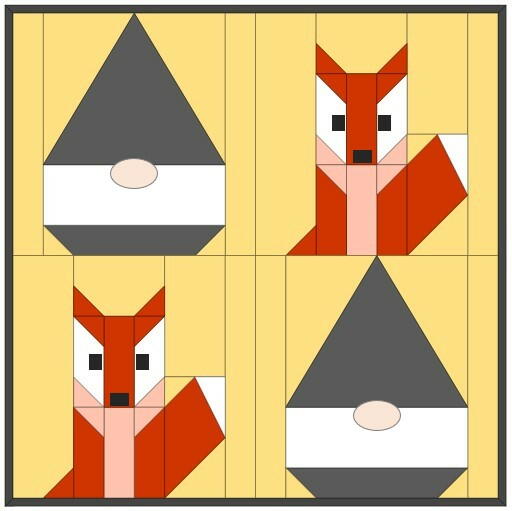
To prepare, draw a diagonal line (using a washable fabric pen and a straight-edge) from one corner to the opposite corner on the back side of 5 – 1-1/2" x 1-1/2" rust squares; 4 – 1-1/2" x 1-1/2" peach squares; 1 – 1-1/2" x 1-1/2" cream square; and 1 – 2-1/2" x 2-1/2" cream square (see the diagram below).
Foot Section: Attach a 1-1/2" rust square on the bottom right corner of an 8-1/2" x 2-1/2" cream strip along the 2-1/2" side by sewing along the diagonal line (see the diagram below). Trim 1/4" from seam, removing the outside corner. Flip the corner open and press seam toward the rust fabric. This completes the Foot Section!
Main Body Section: The Main Body Section is created in sections also! You’ll need to sew the Ears Section, Face Section, and Tummy Section then sew each of these sections together to create the Main Body Section.
Ears Section: Attach a 1-1/2" rust square on each bottom corner of the 3-1/2" x 2-1/2" cream strip, along the 3-1/2" side with the diagonal lines facing opposite each other and running parallel to the corner (see the diagram below). Sew along the diagonal line of each rust square. Trim 1/4" from seam, removing each outside corner. Flip the corners open and press seams toward the rust fabric.
Face Section: Sew a 1-1/2" x 1-1/2" rust square along the diagonal line to corners of 2 – 3-1/2" x 1-1/2" white strips, with diagonal lines facing opposite directions, attaching it to the 1-1/2" side (see the diagram below). Trim 1/4" from seams removing the outside corners. Flip the corners open and press each toward the rust fabric.

Next, sew a peach square (again sewing along the drawn line) onto the opposite bottom corners of these two white/rust strips. Trim each outside corner 1/4" from seam and press seam toward peach fabrics.
Sew these rust/white/peach 3-1/2" x 1-1/2" strips to each side of a 3-1/2" x 1-1/2" rust strip, sewing along the 3-1/2" side. Press seams toward the rust fabric.
Tummy Section: Sew a 1-1/2" peach square along the diagonal line to opposite top corners of 2 – 3-1/2" x 1-1/2" rust strips, attaching it to the 1-1/2" side. Trim 1/4" from seams removing the outside corners. Flip the corners open and press each toward the rust fabric.
Sew these peach/rust 3-1/2" x 1-1/2" strips to each side of a 3-1/2" x 1-1/2" peach strip, sewing along the 3-1/2" side. Press seams toward the peach/rust outside strips.
Sew the bottom of the Ears Section to the top of the Face Section. Press seam toward Face Section. Then, sew the bottom of the Face Section to the top of the Tummy Section. Press seam toward Tummy Section. This completes the Main Body Section!
Tail Section: Draw a diagonal line on the back side of the 1-1/2" x 2-1/2" white strip, drawing it from the upper right corner of the 2-1/2" side down to the lower left opposite corner.
Next, take the 4-1/2" x 2-1/2" rust strip and measure over 1-1/2" from the top right of the 2-1/2" side marking it with a pin. Also measure down 2-1/2" from the top right along the 4-1/2" side marking it with a pin.
Align the white strip so the corners with the drawn lines on them match up to the measured markings, with the upper corner or the white strip aligning to the upper 1-1/2" pinned location and the lower corner of the white strip aligning to the right 2-1/2" pinned location.
The white strip is now laying diagonal to the rust strip and looks a bit wonky. Sew the two strips together along the diagonal line (see the diagram below).
Trim 1/4" from the seam removing the outside corner. Flip the corner open and press toward the white fabric and now the white tip of the tail aligns perfectly with the rust strip!
Sew along the diagonal line to attach the 1-1/2" x 1-1/2" cream square onto the top left corner of the rust/white unit. Trim 1/4" from seam removing the outside corner. Press seam toward the cream fabric. Follow these same directions to sew the 2-1/2" cream square onto the lower right, opposite corner of the unit.
Sew the 4-1/2" x 2-1/2" cream strip to the top side of the tail unit to create a 2-1/2" x 8-1/2" unit. Press seam toward cream fabric. Sew 1 – 8-1/2" x 1-1/2" cream strip to the right, long side of the unit. This completes the Tail Section!
Sew the long, right side of the Foot Section to long, left side of the Main Body Section. Press seam toward Foot Section. Sew the long, left side Tail Section to the long, right side of the Main Body Section. Press seam toward the Tail Section.
Place and iron the two dark gray eyes and a nose onto the face according to directions on the fusible web. Carefully stitch 1/8" or so around the edge of the eyes and nose 2 to 3 times around. Use a wider length of stitch than normally used.
It’s ok if the stitching overlaps and looks a little messy, that adds to the charm of this fox. This completes the Fox Block!
The unfinished block should measure 8-1/2" x 8-1/2", trim if needed. Repeat each step to make a second Fox Block!
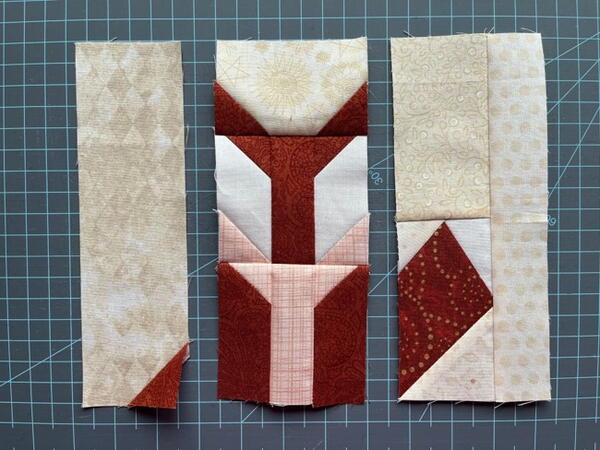

How to Sew the Gnome Blocks
To prepare, draw a diagonal line (using a washable fabric pen and a straight edge) from one corner to the opposite corner on the back side of 2 – 1-1/2" x 1-1/2" cream squares.
Attach a 1-1/2" cream square on each of the bottom corners of a 6-1/2" x 1-1/2" gray strip along the 6-1/2" side with diagonal lines facing in opposite directions.
Sew along the diagonal lines. Trim 1/4" from seams, removing the outside corners. Flip the corners open and press seams toward the gray fabric.
To make the gnome hat, sew a cream triangle from Template B to the left side of the gray gnome triangle that was cut from Template A . Press seam toward cream triangle. Sew a cream from Template C to the right side of the gray cream unit. Press seam toward cream triangle. All templates can be found on this page.
Sew the gnome hat to the 6 1/2 x 2 1/2 white strip, along the 6 1/2 sides. Press seam toward gray fabric.
Then sew on the gray/cream body unit to the bottom of the w hit e strip. Make sure to align the long gray side of the body unit to the white beard Press toward gray fabric.
Place the peach oval nose cut from Template D on the face of the gnome. I like the nose to be mostly on the white with a little sticking above onto the gray hat. Press to set nose in place via directions for the fusible web. Carefully stitch 1/8" or so around the edge of the nose 2 3 times around. Use a wider length of stitch than normally used.
It’s ok if the stitching overlaps and looks a little messy, that adds to the charm of this Gnome Block and makes each one unique Sew an 8 1/2 x 1 1/2 cream strip to each side of the gnome to finish the block. Press toward cream fabric. Unfinished block should measure 8-1/2" x 8-1/2", trim if needed. Repeat all directions to make a second Gnome Block.
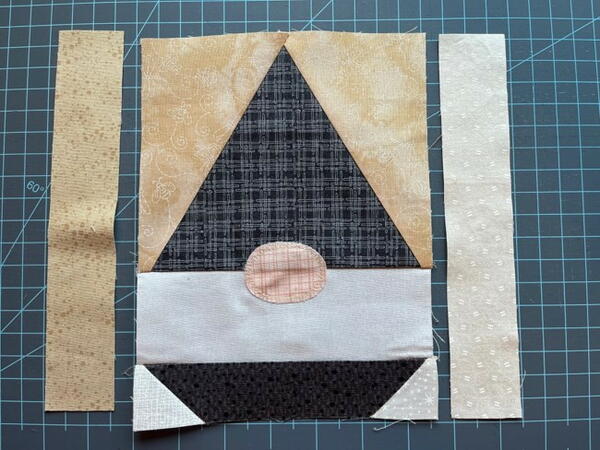
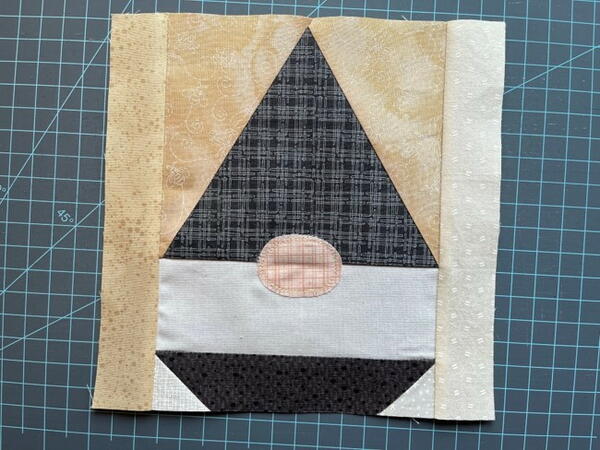
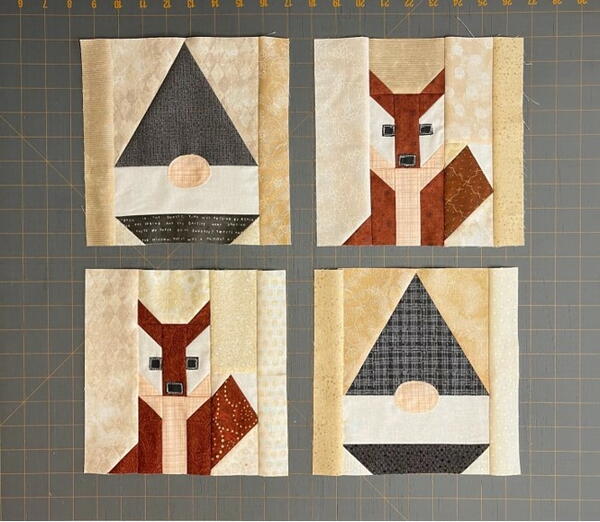
Assemble the Quilt Top
Now that you have the two Fox Blocks and the two Gnome Blocks sewn together, you’re ready to assemble the quilt.
Lay out the blocks like the diagram here. Sew the top gnome to the top fox, press the seam to the right. Then sew the bottom fox to the bottom gnome, press the seam to the left. Now sew the top row to the bottom row, press the seam toward the bottom row.
Finishing the Forest Fox and Gnome Quilt Pattern
Now that you have your quilt top sewn together, it’s time to finish it!
Layering the Top, Batting, and Back of the DIY Quilt
I refer to layering the quilt as "sandwiching". You need to sandwich the top and back with the batting in the middle. For a larger quilt, this process takes a bit more time and steps. But for this small quilt, it’s a breeze to sandwich the layers together!
Tape the Backing Down - On a table or countertop, use masking or painter’s tape to tape down the backing fabric. As you tape the back to the table, you’ll want to make sure the fabric is smooth, without wrinkles. Also, make sure the
right side of the fabric is facing down!
Add the Batting - Lay the batting on top of the taped-down quilt back, and move your hands across it to smooth it all over. This will get rid of any wrinkles in the batting, and help to adhere it to the backing fabric.
Place the Quilt Top - Once you have the batting placed on top of the quilt back, center the quilt top over the two bottom layers. Right side facing up, of course! The two bottom layers of the quilt (the back and the batting) should
extend about 2" all around the outside edges of the quilt top.
Move your hands across the quilt top to smooth it all over, and help remove any wrinkles. This will also help adhere the quilt top to the batting a little bit.
Baste the Layers - Once you have the top of the quilt all smoothed out, use large safety pins to baste all three layers together. I like to use 1-1/2" stainless pins, and I keep them all in a cute old canning jar that was my grandma’s.
Put a pin in each corner of the quilt sandwich and around the entire quilt every 4 5 inches so the three layers don’t move around when you’re machine quilting this project. You really don’t want to use more pins than this or you’ll be
needing to stop a lot when you’re quilting to remove pins, which upsets the mojo of your quilting rhythm.
"Quilting" the Quilt
I used a variety of designs to machine quilt my layers together. I avoided quilting over the noses.
Use whatever free motion stitch you'd like. You’ll need a darning foot to free motion quilt, and you’ll need to either be able to lower the feed dogs on the machine or place a special cover over them. If you’re using a straight stitch to machine quilt you’ll need a walking foot. As an alternative, you can hand quilt these layers together too. Again, there are no rules!
Binding the Quilt
When you’ve finished quilting the layers together, it’s time to bind the edges of your quilt!
Prepare the Binding - Fold each of the cut binding strips in half end to end. Use the 45 line on your plastic ruler to trim the ends at a 45 angle.
When you open the strips the angles on the ends will be facing in opposite directions. Place the ends of two strips perpendicular, right sides together, and sew 1/4" seam.
.
Repeat to join all strips into one long binding strip. Press seams open, then press long strip in half
lengthwise, right sides facing out.
Sew the Binding Strip to the Quilt - Begin to sew the raw edge of the binding to the quilt by pinning it along one side. Be careful to sew the raw edge of the binding strip to the quilt, not the folded edge.
I usually start sewing the binding strip in the middle of the quilt side that I’m starting with. Start sewing about 8" in from the end of the binding strip, leaving a hanging "tail" on the binding. You’ll sew this to the other end of the binding strip when you finish sewing all along the sides of the quilt.
Stop sewing on the first side 1/4" from the corner, use a pin to mark this location and sew right up to it. Backstitch a bit, and cut your thread but DON’T cut the binding strip.
Making the Mitered Corner - Now, remove the quilt and binding strip from your machine and fold the binding strip straight up so it’s perpendicular to the side you were just sewing on.
Fold the binding strip back down on itself and match it to the edge of the quilt you just sewed it to, and the next edge of the quilt you’re about to sew it to. Pin this fold in place, and pin the binding strip to this edge of the quilt, and continue to sew it, again stopping 1/4" from the next corner and repeating the folding process described above.
Continue in this manner until you are on the last side of the quilt, the side you started on.
Connecting the Ends of the Binding - Stop stitching about 14" to 16" from where you started. Backstitch and cut the thread (but not the binding strip, not yet!), remove the quilt and binding strip from the machine.
You now have two "tails" of the binding strip, tail #1 from where you started stitching it to the quilt and tail #2 from where you ended. You’ll need to join these tails together so that you have a continuous binding strip to finish sewing down to the quilt. Follow the steps below to join the tails!
- Lay tail #1 of the binding strip along the unsewn edge of the quilt. Trim it at a 90 angle about halfway between this unsewn edge.
- Lay tail #2 of the binding strip over tail #1 along the unsewn edge of the quilt. Measure 2-1/2" beyond the trimmed straight edge of tail #1. Mark this 2-1/2" measurement with a pen or pencil, and trim the tail #2 at a 90 angle also. The two trimmed bindi ng strip tails should overlap by 2-1/2".
- Unfold the two tails so they lay flat. Pin the two tails together perpendicular to each other (right sides together). Use a fine pencil to draw a diagonal line from the corner of tail #2 to the opposite side, as shown here. Sew along the drawn diagonal line.
Fold the binding strip in half again. The continuous binding strip should now lay flat along the unsewn edge of the quilt. If necessary, shorten or lengthen the continuous strip before trimming it. Then trim the outside corner 1/4" from the seam and finger press the seam open. Fold it in half again and finish sewing the binding strip to the quilt.
Hand Stitch the Folded Binding Edge to the Quilt Back - Here is my FAVORITE part of the process, hand stitch the folded edge of the binding strip to the back of the quilt. When you get to the corner, carefully turn the corner right side out to make a nice, mitered corner. I tack a few stitches up the corner to hold it in place, and then continue stitching along all sides and corners until…VOILA! Your binding is complete!
If you’d like, you can add a label to the back of your quilt.
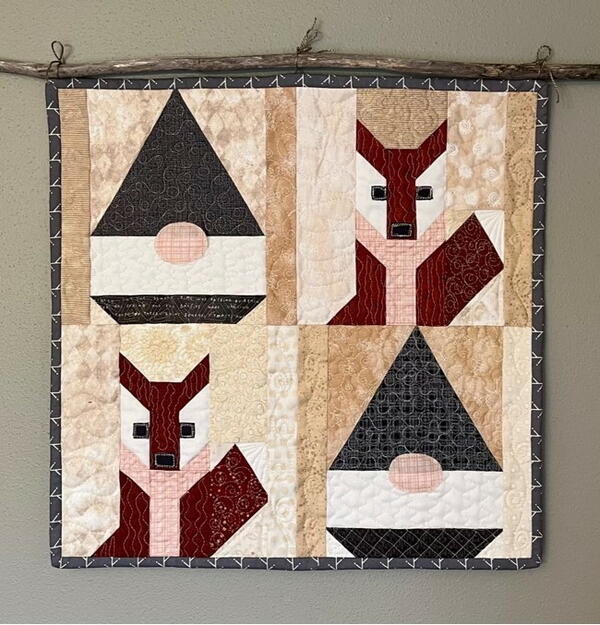
Want More?
50+ Sewing Crafts That Sell Well >>
Do you love or hate the gnome trend?
Let us know in the comments!
Read NextButterfly Garden Quilt

